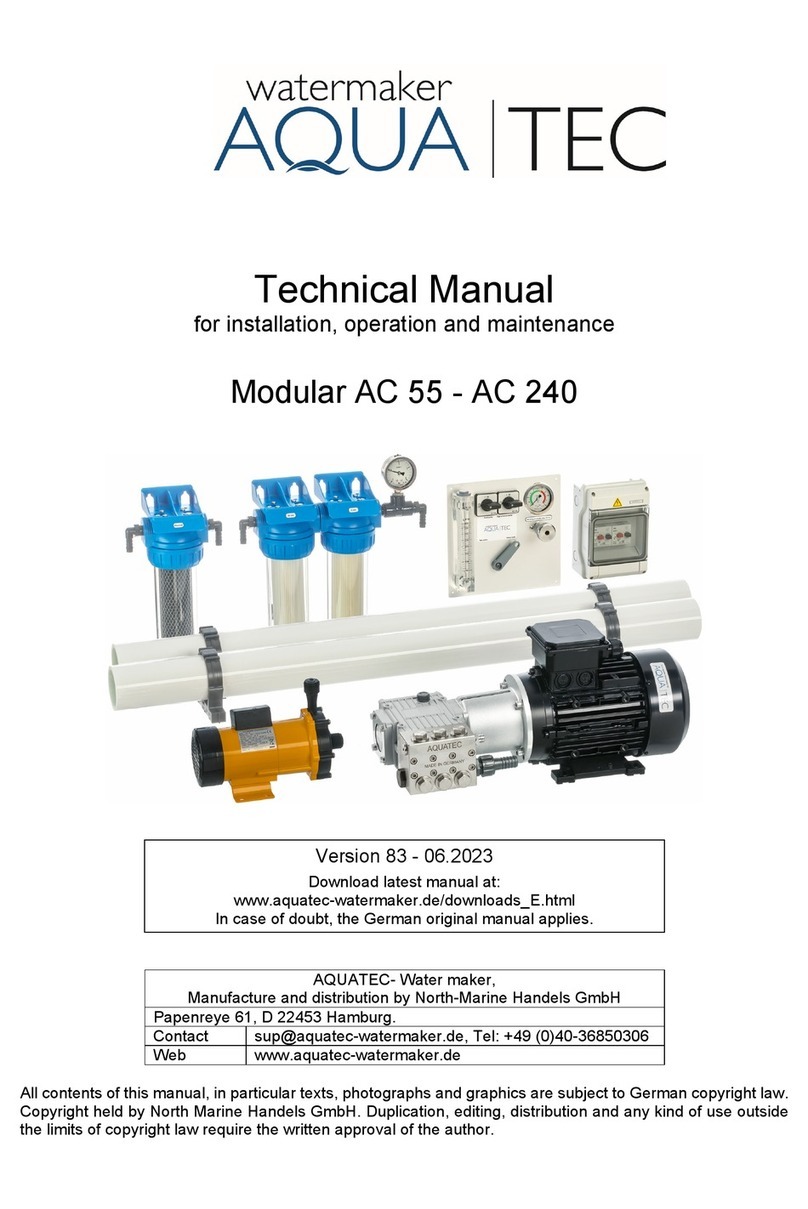
4
Introduction
The principle of reverse osmosis (RO)
In natural sciences and technology, osmosis is perceived as the directed migration of molecules
through a semi permeable membrane. The chemical and physical structure of the membrane
determines which molecules are able to pass and which are not. For this reason, it is called semi-
permeable, which means as much as halfway or partial permeability.
RO Membrane
If one mixes different liquids, like in this case water with different salinities, they aim to equalize their
concentration. That way, the seawater would be thinned out and the drinking water would be enriched
with salts. The effect would be a less concentrated, homogeneous dissolution. Pouring sea- and fresh
water in equal amounts into a container where both liquids are separated by an adequate semi-
permeable membrane, there would be one side with seawater that is highly loaded with salts, on the
other side more or less “clean” water without or with little dissolved components.
The natural tendency of both liquids to equalize their salinity leads to the migration of water molecules
from the fresh water side towards the seawater side. As a result, the volume of water on the fresh
water side decreases while it increases on the seawater side. This process of osmosis takes place
until the pressure on the seawater side is in accordance with the osmotic pressure. Then it stops. In
this case, the osmotic pressure is around 30 bar.
The described process however is reversible by exposing the liquid on the seawater side to
mechanical pressure. At a pressure of 30 bar, the osmotic process cannot take place or would rather
be reversed. When pressure is increased beyond 30 bar, for instance 60 bar, water molecules from
the seawater side migrate to the fresh water side. All other components of the seawater dissolution
are not able to pass the membrane. As a result, the dissolution on the seawater side remains highly-
concentrated while there is a gain of fresh water on the other side of the membrane. This process is
referred to as reverse osmosis (R.O.)
The seawater is delivered to the pressure pipe’s entry side of a RO-system by a high-pressure pump.
The osmotic membrane is located in the pressure pipe and is merely permeable for the vehicle “water“
(solvent) and detaining the soluted substances. When the pressure difference is more than leveling
out the osmotic head, the water molecules are able to pass the membrane that works like a filter, while
the “unpurified” molecules are detained. In opposite to a classic membrane-filter, osmosis membranes
do not have continuous pores. In fact, the ions and molecules are migrating through the membrane by
diffusing through the membrane material. Inside of the membrane, the permeate-tube is located which
transports the fresh water through one of the two end caps of the pressure pipe towards the fresh
water tank. The excess seawater, now referred to as concentrate (brine), is drained off overboard
through the outlet of the pressure pipe by a pressure control valve.




























